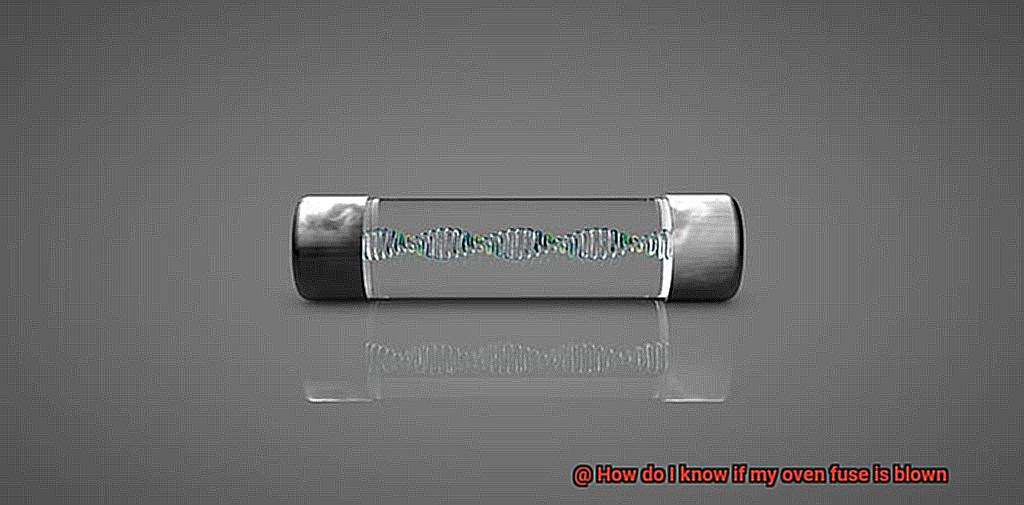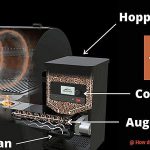Picture this: you’re hosting a dinner party for your closest friends, and everything is going according to plan. You’ve marinated the chicken to perfection and preheated the oven to the ideal temperature. But as time ticks by, something seems off. The chicken isn’t cooking, and you can’t seem to figure out why.
One possible explanation is a blown oven fuse. A fuse acts as a protective measure against power surges and overloads that could damage your electrical appliances or even cause safety hazards. When a fuse blows, it interrupts the flow of electricity to prevent any harm.
So how do you know if your oven’s fuse is blown? There are several tell-tale signs to watch out for. Is your oven not heating up at all? Are the display panel or buttons unresponsive? Has the light inside the oven stopped turning on? These are all red flags that point towards an issue with your oven’s fuse.
In this post, we’ll delve into various ways of diagnosing whether your oven’s fuse has blown, talk about why it’s crucial to replace fuses correctly, and highlight potential risks associated with tampering with electrical components. Keep reading to learn more about troubleshooting oven fuse issues and ensuring that your next culinary masterpiece turns out perfectly.
Contents
Checking if the Oven Turns On
The problem may be a blown fuse, and we’ve got you covered with this step-by-step guide to checking if your oven fuse is blown.
The first step is to check if the oven turns on. Turn the temperature dial to a high setting and wait for a few minutes. If the oven heats up and the element turns red, your oven is likely working properly. However, if it doesn’t turn on at all, it could be a sign that the fuse is blown.
Next, check the clock or timer display. If it’s blank, there’s a good chance that the fuse has blown. While you’re at it, take a look at the circuit breaker box. Locate the circuit breaker that controls your oven and check if it has tripped or turned off. If so, try resetting it by switching it off and then on again. If it trips again immediately after resetting, call a professional electrician.
Now, onto the fuse itself. The location of the fuse varies depending on the make and model of your oven, but it’s usually located near the control panel or in the back of the oven. Consult your owner’s manual for specific instructions on how to locate and remove the fuse safely.
Inspect the fuse carefully for any signs of damage such as discoloration, cracks, or broken wires. If you notice any damage, then it’s time to replace the fuse. But if you’re not sure if the fuse is blown, use a multimeter to test for continuity. Simply set the multimeter to check for continuity and touch one probe to each end of the fuse. If there’s no continuity, then the fuse is blown and needs to be replaced.
Checking if the Clock or Timer Display is Working
Before we get started, let’s do a quick recap. In a previous section, we discussed how a blown oven fuse can ruin your cooking plans and how to test if the temperature dial, circuit breaker box, and fuse are working correctly. Now, let’s focus on the clock or timer display.
To begin with, turn on your oven and check if the digital display lights up. If it doesn’t, try resetting the clock or timer. If the display still doesn’t work, then it’s possible that the fuse is blown and needs to be replaced.
But wait, there’s more. You can also listen for a ticking sound. Most ovens have a timer that makes a ticking sound when it’s on. If you hear the ticking sound, then your clock or timer display is most likely working fine.
If your oven has a manual timer, you can test it by turning it on and waiting for it to ring. If it doesn’t ring, then there might be an issue with the wiring or fuse.
It’s important to note that even if the clock or timer display is functioning correctly, your oven might still not heat up. In this case, it could indicate a problem with the heating element or thermostat.
In summary, checking if the clock or timer display is working is an essential step in diagnosing any issues with your oven. Here’s a checklist of what you need to do:
- Turn on your oven and check if the digital display lights up
- Listen for a ticking sound from the timer
- Test a manual timer by turning it on and waiting for it to ring
Checking the Circuit Breaker Box
Don’t worry; we’ve got you covered. Checking the circuit breaker box is a crucial first step to determine if your oven fuse is blown. In this guide, we will explain how to use a multimeter tool to check if the circuit breaker itself is faulty.
Before we dive into the details, let’s first understand what a circuit breaker box is. A circuit breaker box is an electrical panel that contains a series of switches or levers that control electricity in your home. It’s usually located in the basement or garage and is responsible for protecting your home from electrical overloads.
To check if your oven fuse is blown, start by locating the switch or lever labeled “oven” or “range” in your circuit breaker box. If it’s flipped off, turn it back on and check if your oven is working again. If it’s already on, try flipping it off and then back on again to reset it.
But what if resetting the circuit breaker doesn’t resolve the issue? In that case, you might need to check if the circuit breaker itself is faulty. Here’s how you can do it:
- Step 1: Turn off all power to your oven by flipping the switch or lever in the circuit breaker box.
- Step 2: Use a multimeter tool to test the voltage of the circuit breaker. A multimeter tool is a device that measures voltage, current, and resistance in an electrical circuit.
- Step 3: Touch the probes of the multimeter tool to the terminals on either side of the switch or lever.
- Step 4: Check for a voltage reading. If there is no voltage reading, this may indicate that your circuit breaker needs to be replaced.
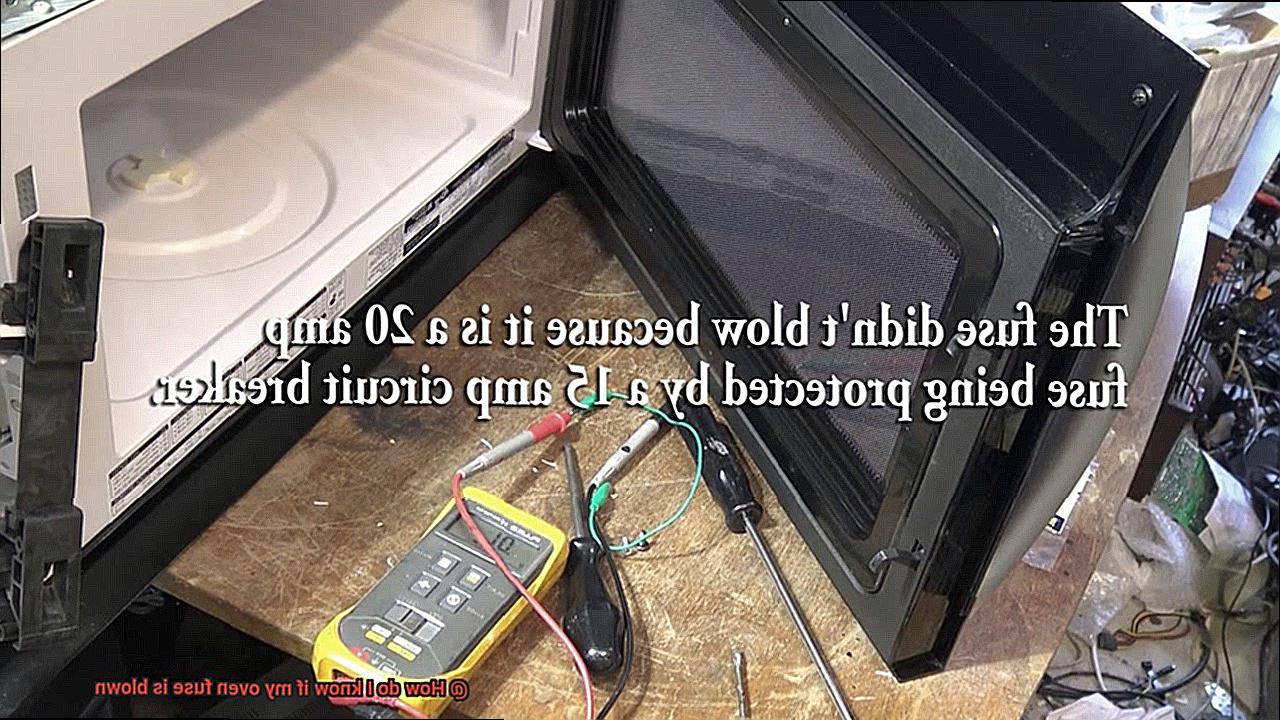
It’s important to note that dealing with electricity can be dangerous if you’re not comfortable working with it. If you’re unsure about checking your circuit breaker box, it’s best to contact a professional electrician instead.
Inspecting the Fuse for Damage
Before calling a professional, it’s important to inspect the fuse for damage. This simple step can save you time and money in the long run.

First and foremost, safety should always come first. Before inspecting the fuse, turn off the power to your oven by unplugging it or switching off the circuit breaker.
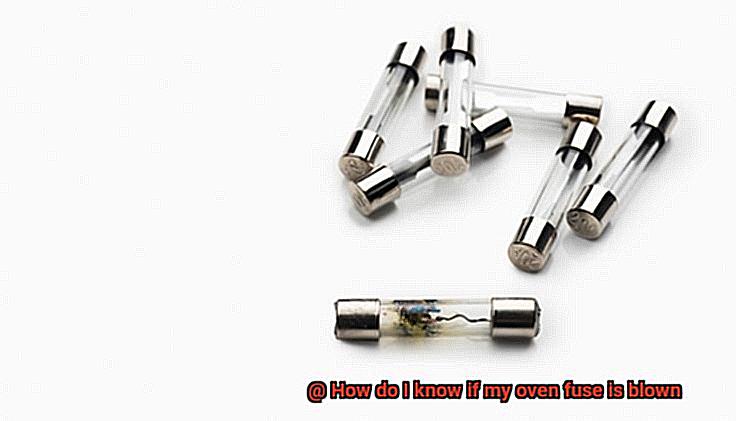
Next, locate the fuse. Check your oven’s manual or look for a small glass or ceramic cylinder with metal caps near the back of the oven. Once you have located it, visually inspect for any signs of damage such as a broken filament or discoloration. If you see any of these signs, then it’s likely that the fuse is blown and needs to be replaced.
However, sometimes a blown fuse may not show any visible signs of damage. In this case, use a multimeter to test its continuity. Set the multimeter to measure resistance and touch the probes to each end of the fuse. If it reads infinite ohms, then the fuse has blown and needs to be replaced.
It’s important to note that using a different type of fuse could potentially cause more damage to your oven or even be a fire hazard. Therefore, always replace the blown fuse with one that has the same voltage and amperage rating as the original.
How to Locate and Remove the Fuse Safely
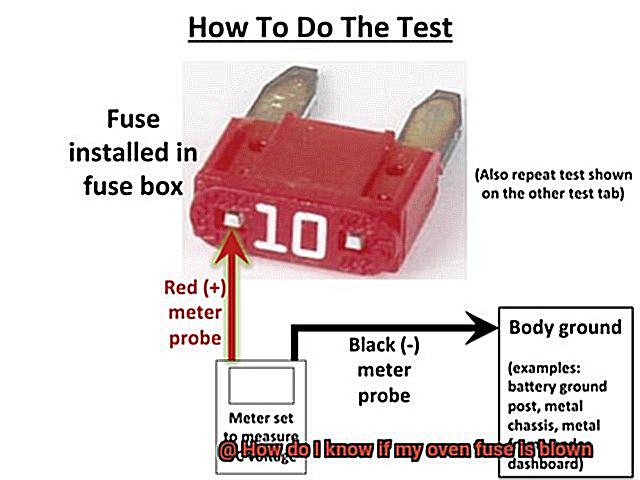
If your oven is not working, it may be due to a blown fuse. But don’t panic, locating and removing the fuse safely is an easy process that you can do yourself with a few simple steps.
Step 1: Turn off the Power Supply
Safety should always come first when dealing with electrical appliances. So before starting any repairs or maintenance on your oven, make sure to turn off the power supply. You can do this by unplugging it from the wall or by switching off the circuit breaker that controls the oven’s electrical supply.
Step 2: Locate the Fuse
The fuse in your oven is usually located behind the control panel on the front of the oven. However, some fuses may be behind a panel or cover that requires a screwdriver to remove. To locate the fuse, consult your oven’s user manual for specific instructions.
Step 3: Remove the Fuse
Once you have located the fuse, gently pull it out of its socket. Some fuses may be held in place by clips or screws, so it’s important to refer to your user manual for specific instructions on how to remove it safely.
Step 4: Inspect for Damage
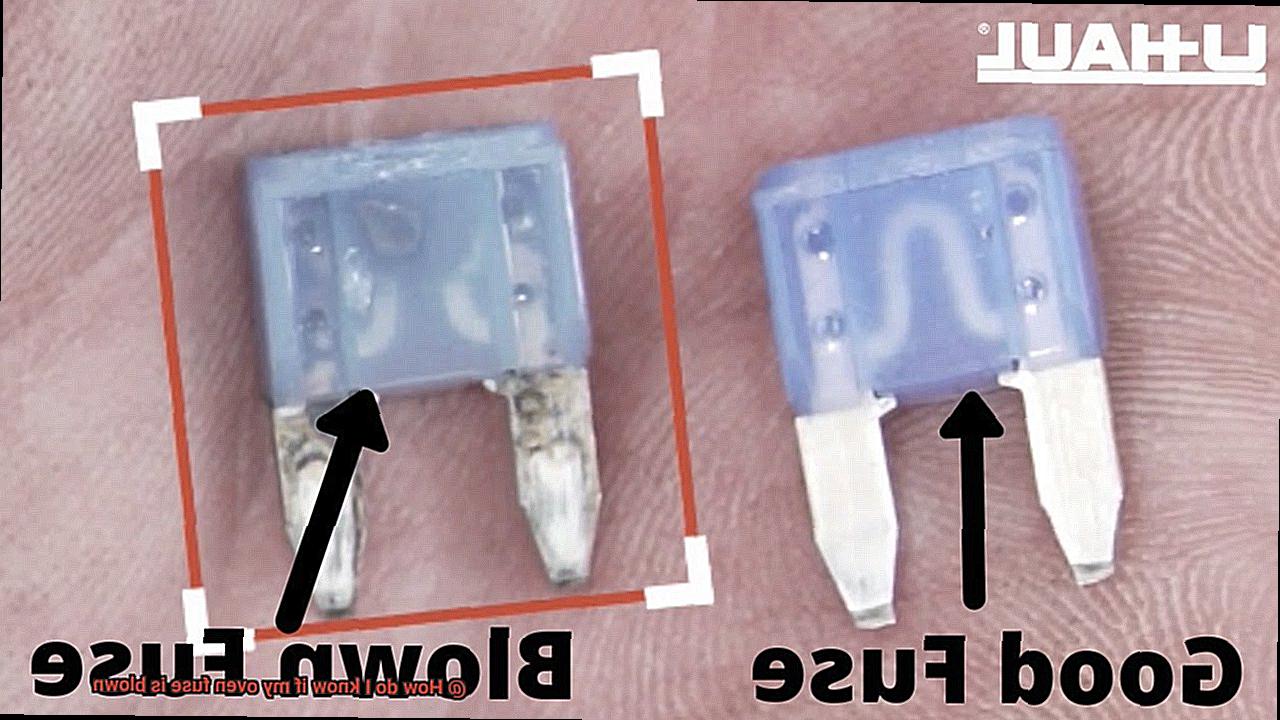
Inspect the fuse for any signs of damage such as a broken filament or a blackened appearance. If it appears to be blown, replace it with a new one of the same amperage rating. Using a fuse with a different rating can cause damage to your oven or even create a fire hazard.
Step 5: Reassemble and Test
After replacing the fuse, reassemble any panels or covers that were removed. Then turn on your oven and test it to ensure that it is working properly.
Purchasing a Replacement Fuse
You were in the middle of baking your favorite dish when suddenly, your oven’s fuse blew out. Don’t panic, replacing a blown fuse is a simple and affordable task. However, it’s crucial to purchase the correct replacement fuse for your particular oven model to ensure its proper functioning.
Before making a purchase, it’s important to determine the type of fuse required for your oven. You can find this information in the owner’s manual or by contacting the manufacturer directly. It’s a small step that will save you from a headache down the road.
Once you have the necessary information, you’re ready to go shopping. However, keep in mind that using an incorrect fuse can lead to serious consequences such as damage to your oven or even fire hazards. Therefore, make sure to double-check that the replacement fuse meets your oven’s voltage and amperage requirements before making a purchase.
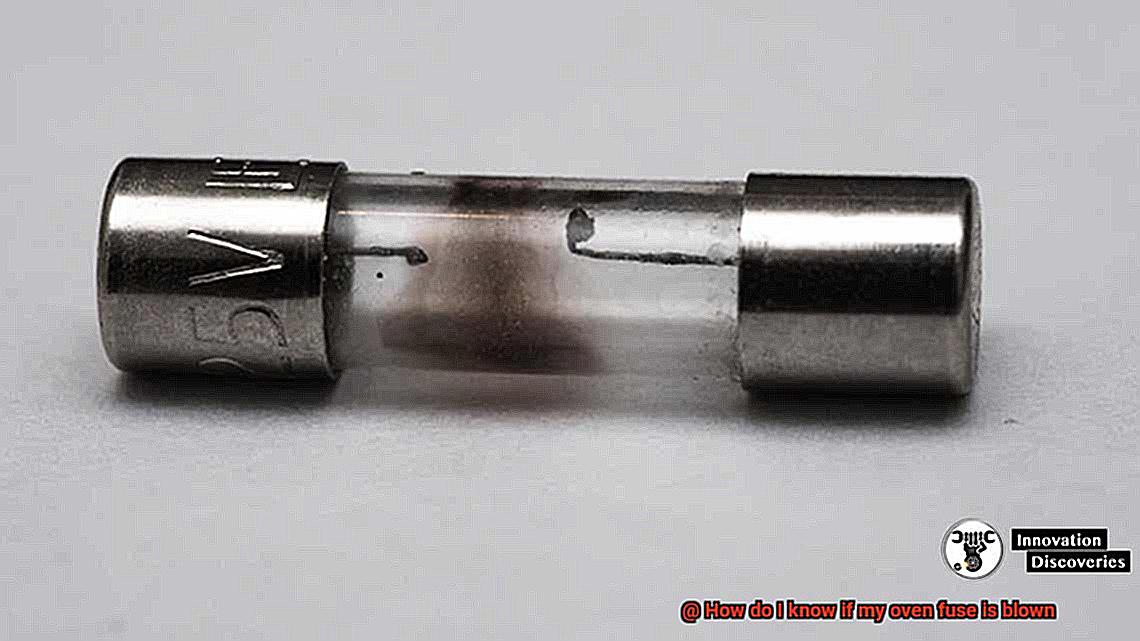
When shopping for a replacement fuse, consider bringing the old one with you to ensure that you’re purchasing the correct type. Some retailers may even offer assistance in finding the right replacement fuse for your specific oven model.
As for where to purchase a replacement fuse, you have several options available. You can visit a local appliance store or check out online retailers. Just make sure to choose a retailer that has a good reputation and offers quality products.
1SWZTsSdeJo” >
Conclusion
In conclusion, a blown oven fuse can be a major inconvenience, especially when you’re in the middle of preparing a meal. But fear not, diagnosing and fixing this issue is not as daunting as it may seem. By following the simple steps outlined in this article, you can easily determine if your oven’s fuse is blown and replace it safely.
Remember to always prioritize safety when dealing with electrical appliances. Before inspecting or replacing fuses, ensure that the power supply is turned off. Also, never use a different type of fuse than what is recommended for your oven.
If you find any step in the process confusing or feel uncomfortable working with electricity, don’t hesitate to contact a professional electrician for assistance.

